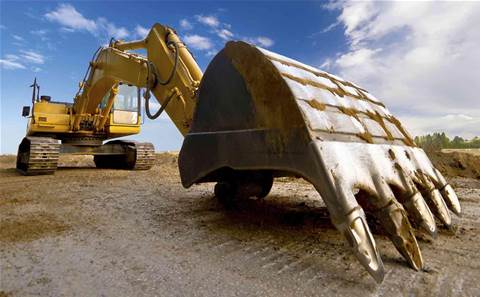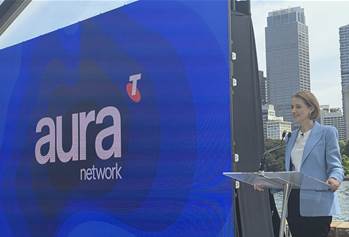At its firmament, the mining industry is built around the economics of moving rocks. Even with oil and gas, the challenge is to get those rocks out of the way. Unlike many other industries, miners don’t compete on product (although there are certainly grades of quality) and they don’t compete on marketing, since the buyers tend to be limited and well understood.
Instead, according to Gartner analyst Kristian Steenstrup, what sets miners apart is the value they can extract from their assets and the way that feeds into the price and delivery.
Steenstrup says the mining industry is heavily influenced by commodity prices and trends. “Right now, they are coming off a boom period and, therefore, there will be some spending constraints.”
This is what integrators working in the mining sector are seeing, according to CRN interviews.
However, this is not necessarily bad news. As Steenstrup notes, “One of the characteristics of the mining industry is that it does spend up big on expansion when they are in these periods of growth, but when the growth stops the spending doesn’t. The focus just switches to using technology to contain costs. That makes it different to many other industries,” he says.
Indeed, Gartner’s own data suggests that over the next two years, IT spending in the natural resources and materials sector will grow by a little over five percent and be worth more than $5 billion as the emphasis switches from exploration to production.
Still, that adjustment can provide some short-term pain for resellers.
Peter Drummond, owner of small south-east Queensland integrator, Smile IT, says there was definitely a downturn last year, although he has more optimism among mining clients now than there was in October last year.
“We saw a big downturn in the last year-and-a-half, but we are still picking up.”
He gives the example of one Brisbane-based client with tenements in Canada, which is predicting massive growth. The impact, if the client is right, is that the Brisbane office could grow from five to 50 staff very rapidly.
Not all resellers are feeling the love though. One Fast50 reseller who CRN spoke to, who preferred not to be quoted in this report, says he has shifted the business away from mining clients in recent times because of the declining fortunes of smaller miners in particular.
For those resellers who remain engaged into the sector though, opportunity abounds. Jules Rumsey, CEO of Cloud Plus, says mining is a growing part of his company’s portfolio and now accounts for more than 10 percent of business.
Part of building success in the mining sector is understanding how the industry differs to other verticals. “It’s definitely different,” says Rumsey.
“It’s a bit like construction. They have immediate short-term requirements and those requirements can be relatively challenging. Try getting fibre into regional Australia for instance. And while there can be some massive growth, it can be relatively short term.”
But, he says that unlike in other sectors, when there’s a job to be done, the miners are happy to pay a premium.
Greg Murkowski, managing director of Perth-based Epic IT, agrees. “It’s a pleasure to deal with the miners. The most important thing for them is the timeframes and you need to be mindful of that. They are more interested in getting the solution on time and having it delivered than they are in quizzing us on our costs.
“That means we can always recommend our best solutions, which saves a lot of problems down the track compared with industries where clients are always chipping away at our recommendations in order to save money.
“For example, we had a project get the go-ahead on 1 December. Most companies would be winding up but these guys said they wanted it working by Christmas Day. The attitude tends to be, ‘If we have to pay double, we will pay double’.”
Of course, it would be wrong to suggest the industry doesn't understand the value of a buck. Quite the contrary. In fact the miners understand that even small efficiency gains over the 20- to 50-year life of a mine can translate into huge sums.
David Hattrick, business development manager, major capital projects, at Oracle’s Primavera business unit, says: “The early part of this century involved the expansion of existing mines, and the opening of new mines. Then there was the emergence of coal seam gas projects in Queensland and LNG projects in the west.”
This, says Hattrick, was the capex phase. “Now we are moving into the opex phase. This was always going to happen. The assets have been built and now they have to be operating so emphasis is shifting very much to operational efficiency.”
Factors such as falling commodity prices and the realisation by some of the bigger miners that they paid too much for acquisitions during the boom has sharpened this focus. Among the technologies and trends that are evident in this new phase are an increased reliance on sensing and detection capabilities, the further automation of mining, better use of analytics, particularly predictive analytics for maintenance, and of course cloud.
More outsourcing
David Hanrahan, general manager, cloud services at Dimension Data, has seen a shift among DiData’s mining clients. They have gone from having a “very inhouse-centric mindset” to become increasingly comfortable with outsourcing IT.
“Up until now they have been very intent on having in-house capacity and capabilities and very aggressively built out very significant skills across the whole IT spectrum, from consulting to engineering. They have always assumed they would need to run the services piece themselves.”
While this is changing, two overriding features of mining companies that have not changed are that they’re heavily cost focused and very risk averse. If a resourceful IT solutions provider can prove ways to cut costs or to reduce risks, that will grab the attention of a mining client.
The combination of a focus on cost-reduction, a wariness about risk and a growing taste for outsourcing favours cloud, says Hanrahan. “Historically, [mining clients] have always had a strong risk-review process. They have always been very intelligent buyers. They have typically been able to run a very well-managed process for acquiring anything. They can drive the best market position, drive risk, and as they have adopted cloud they have managed that well, because they know how to mitigate the risks.”
Cloud means mining firms can avoid costly shipping of hardware to remote locations and instead buy infrastructure as a service. For exploratory projects, miners can quickly ramp up capacity and scale back just as quickly if needs be.
“Mining is always looking at specific projects; they had always built infrastructure, shipped it out and dealt with the issue of remote support. The cost of failure is much less with cloud. Previously they would put a project in, provision all the resources, and that project wasn’t allowed to fail due to the size of the investment,” says Hanrahan.
For DiData, having cloud presence in mining nations such as Australia, Brazil and its home country, South Africa, is a winning offer.
While cloud hosting could offer advantages for remote sites, the internet speeds often aren’t fast enough. Delivering the kinds of resource-heavy applications used by mining firms via a microwave
or satellite link-up just wouldn’t be feasible.
The CIO of a global resources company, who asked not to be named, agrees that internet speed is the issue. “In many instances, the more remote you get, bandwidth significantly decreases.
“I think that as bandwidth increases around the world, we will see an increase in cloud adoption.”
There are currently hybrid approaches that can bridge the gap, he adds. Although bandwidth may limit the ability to cloud-host applications where high processing speeds and refresh rates are required, common applications, such as email, may suit a cloud environment.
For instance, in 2012, Fortescue Metals Group moved to Office 365 for its site in the Pilbara region of Western Australia. It began with Lync Online for all 4,500 employees, followed by a migration to Exchange Online.
Next: Sensing and detection





_(11).jpg&h=142&w=230&c=1&s=1)




.jpg&w=100&c=1&s=0)
_(8).jpg&w=100&c=1&s=0)







.jpg&q=95&h=298&w=480&c=1&s=1)





